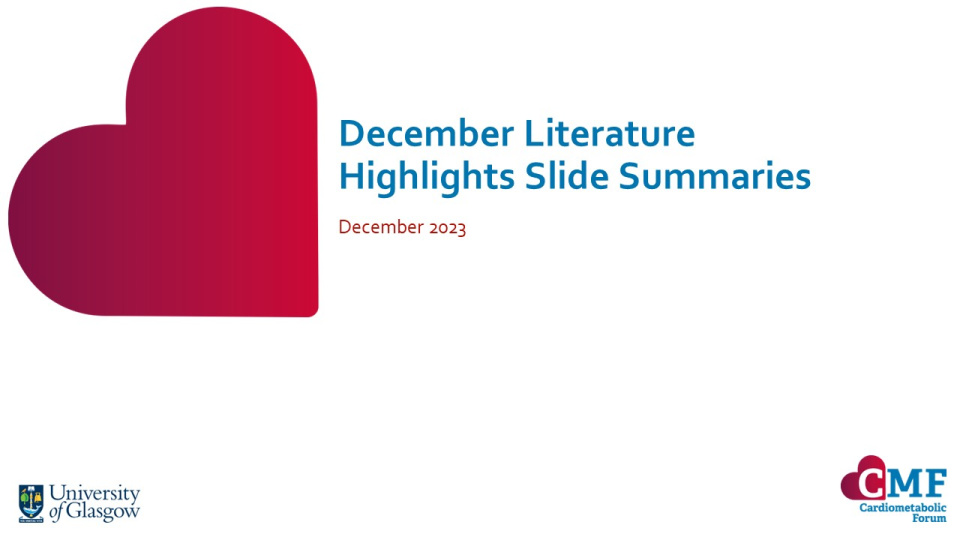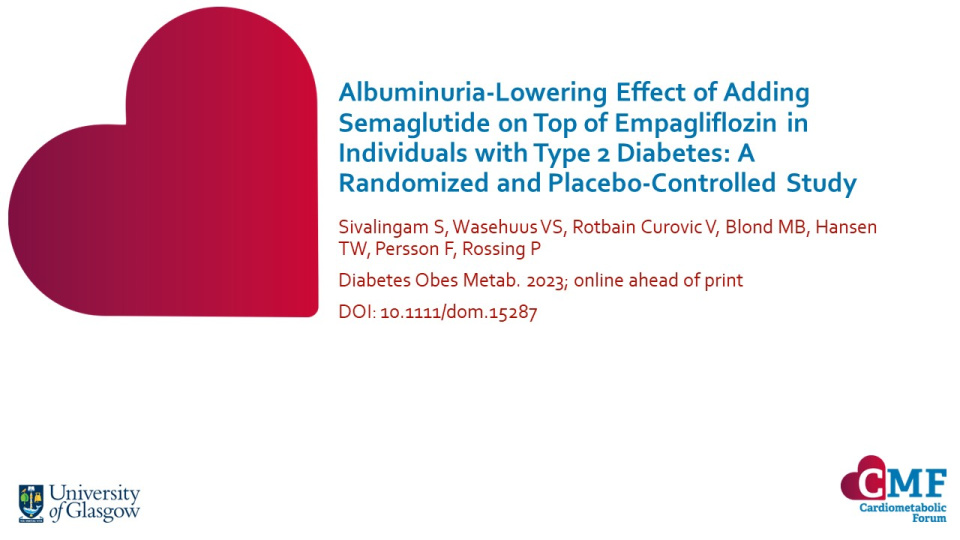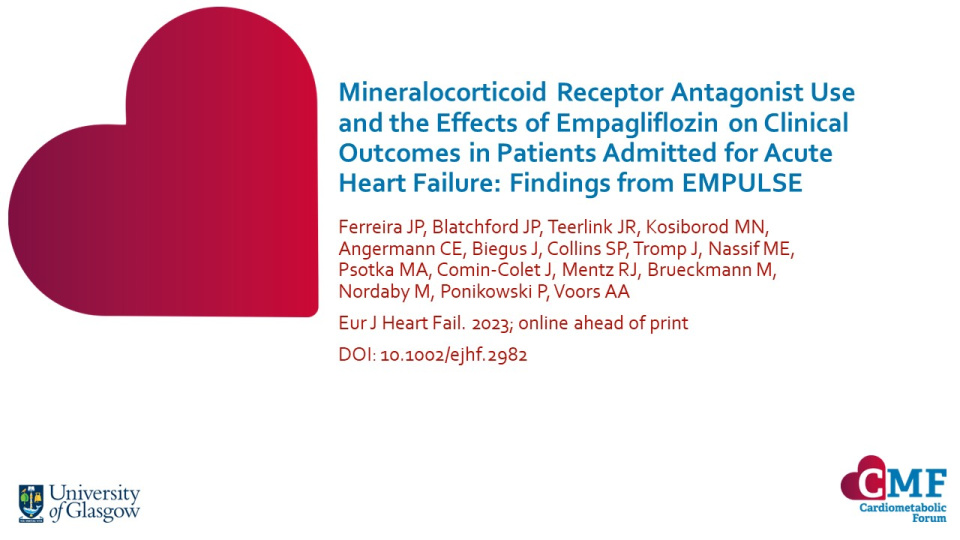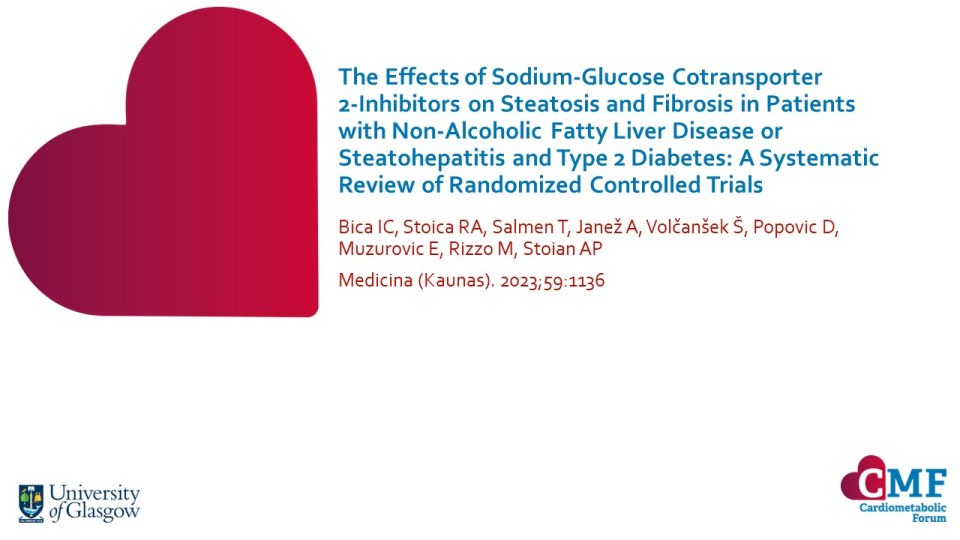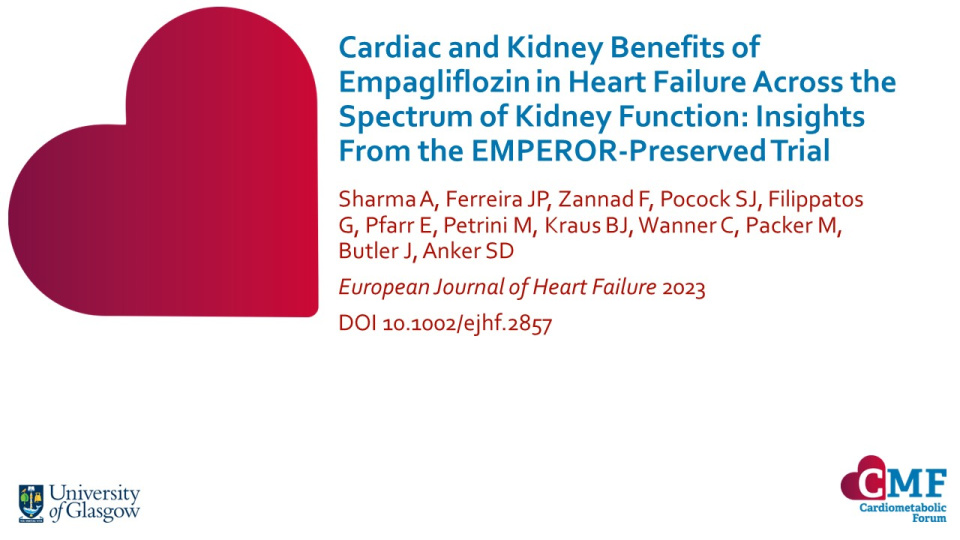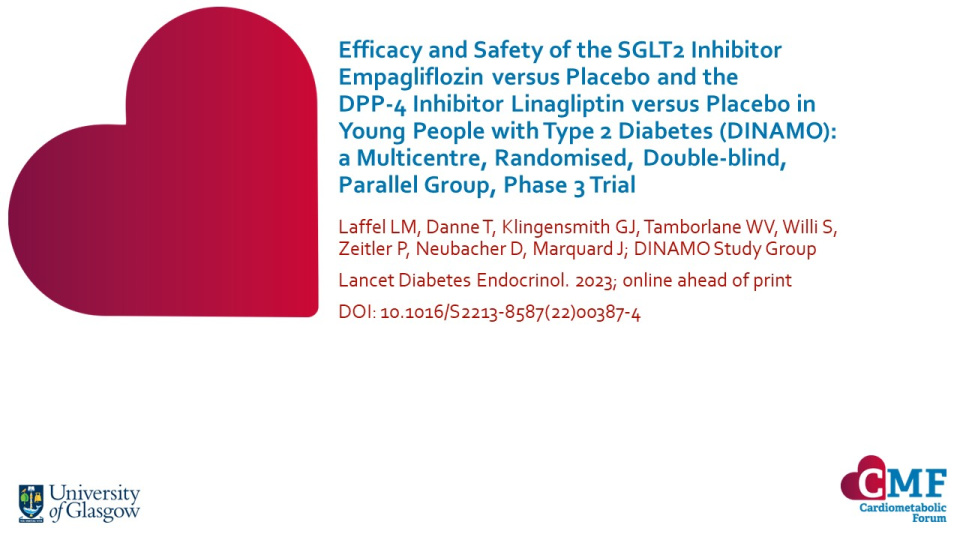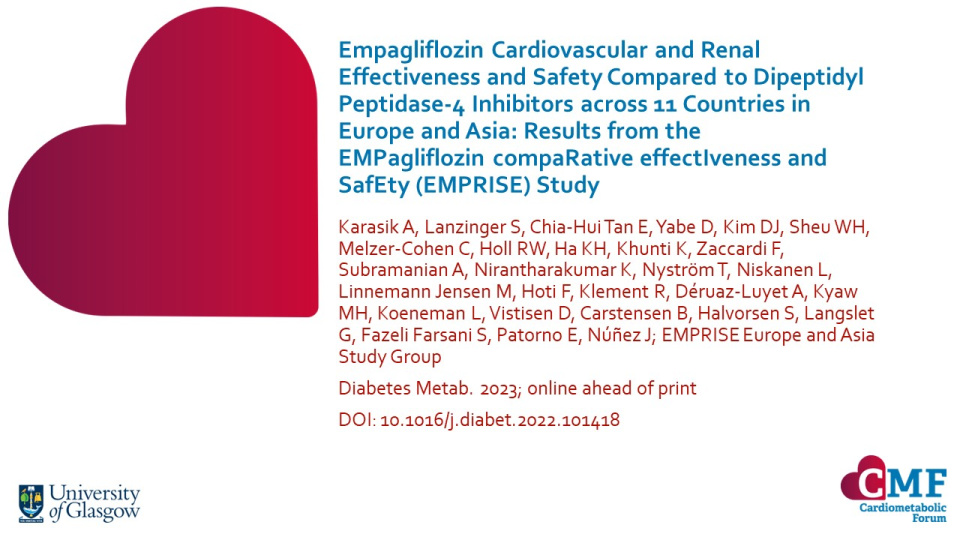Publications
Stay up to date with our literature reviews which are curated by experts to feature the most important publications released each month. Explore our publications for access to concise summary slides for your own use.
Albuminuria-Lowering Effect of Adding Semaglutide on Top of Empagliflozin in Individuals with Type 2 Diabetes: A Randomized and Placebo-Controlled Study
Diabetes Obes Metab. 2023; online ahead of print DOI: 10.1111/dom.15287
The proposed different mechanisms of SGLT2i and GLP-1RAs indicate that combination therapy may have additive or synergistic effects on the kidneys. This placebo-controlled, double-blind, parallel-group study investigated the effect on albuminuria of adding semaglutide to ongoing treatment with empagliflozin compared with empagliflozin alone in 60 individuals with T2D and albuminuria.
Keywords:
Mineralocorticoid Receptor Antagonist Use and the Effects of Empagliflozin on Clinical Outcomes in Patients Admitted for Acute Heart Failure: Findings from EMPULSE
Eur J Heart Fail. 2023; online ahead of print DOI: 10.1002/ejhf.2982
In the EMPULSE trial, empagliflozin produced greater clinical benefit than placebo in patients hospitalised for AHF. Although many patients with AHF are treated with MRAs, the interplay between empagliflozin and MRAs in AHF has not been explored. A post-hoc analysis of the EMPULSE trial aimed to evaluate the efficacy and safety of empagliflozin versus placebo according to MRA use at baseline.
Keywords:
The Effects of Sodium-Glucose Cotransporter 2-Inhibitors on Steatosis and Fibrosis in Patients with Non-Alcoholic Fatty Liver Disease or Steatohepatitis and Type 2 Diabetes: A Systematic Review of Randomized Controlled Trials
Medicina (Kaunas). 2023;59:1136 DOI: 10.3390/medicina59061136
T2D and NAFLD/NASH share common causal pathways. As a class of glucose-lowering agents with well-established cardiovascular benefits, SGLT2i have been studied for effects on steatosis and fibrosis in patients with NAFLD or NASH. A systematic review was conducted to examine the efficacy of SGLT2i on NAFLD/NASH in patients who also had T2D.
Keywords:
Cardiac and Kidney Benefits of Empagliflozin in Heart Failure Across the Spectrum of Kidney Function: Insights From the EMPEROR-Preserved Trial
European Journal of Heart Failure 2023 DOI 10.1002/ejhf.2857
In the EMPEROR-Preserved trial, empagliflozin was found to improve the clinical outcomes of patients with heart failure and preserved ejection fraction (HFpEF). This pre-specified analysis sought to explore the effect of empagliflozin on cardiovascular (CV) and kidney outcomes across different levels of kidney function.
Efficacy and Safety of the SGLT2 Inhibitor Empagliflozin versus Placebo and the DPP-4 Inhibitor Linagliptin versus Placebo in Young People with Type 2 Diabetes (DINAMO): a Multicentre, Randomised, Double-blind, Parallel Group, Phase 3 Trial
Lancet Diabetes Endocrinol. 2023; online ahead of print DOI: 10.1016/S2213-8587(22)00387-4
The incidence of T2D in young people is increasing, but treatments remain limited. The double-blind DINAMO trial was conducted in 158 young people (aged 10−17 years) with T2D (HbA1c 6.5-10.5%) who had been previously treated with metformin or insulin. Participants were initially randomised to empagliflozin 10 mg, linagliptin 5 mg or placebo. Participants in the empagliflozin group who did not reach HbA1c <7.0% by week 12 were re-randomised at week 14 to either remain on empagliflozin 10 mg or have their dose increased to 25 mg. Participants in the placebo group were randomised at week 26 to linagliptin 5 mg or one of the empagliflozin doses (10 mg or 25 mg).
Empagliflozin Cardiovascular and Renal Effectiveness and Safety Compared to Dipeptidyl Peptidase-4 Inhibitors across 11 Countries in Europe and Asia: Results from the EMPagliflozin compaRative effectIveness and SafEty (EMPRISE) Study
Diabetes Metab. 2023; online ahead of print
Previously, the real-world EMPRISE US study found that empagliflozin initiation was associated with a lower risk of hospitalisation for HF, all-cause mortality and CV events when compared with DPP-4i.

